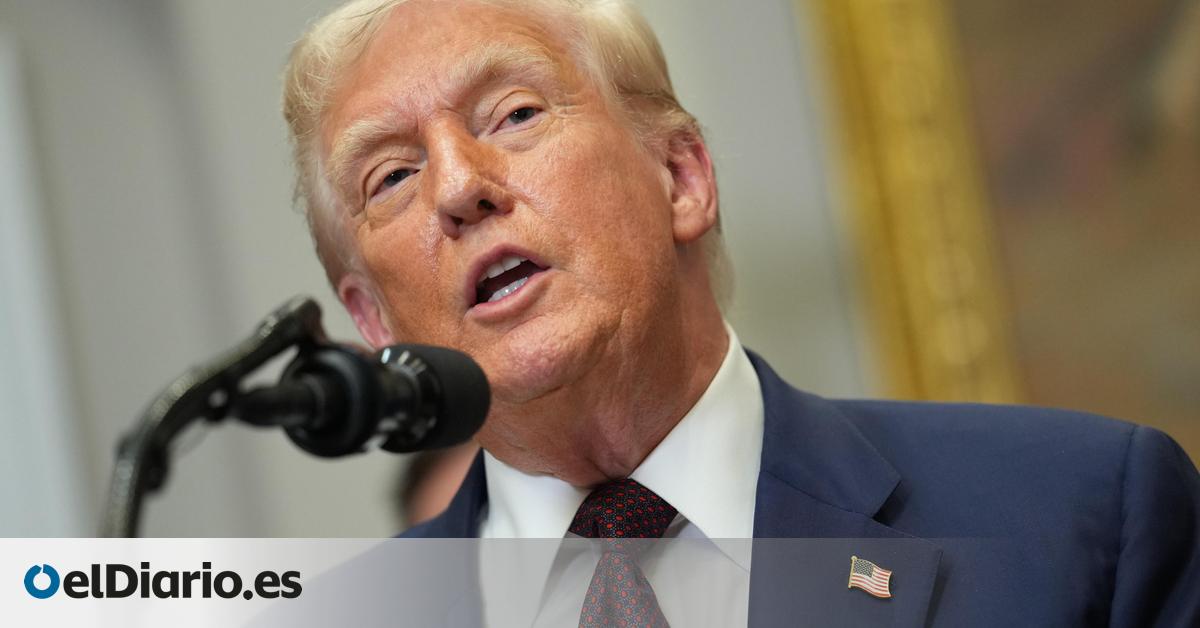
The US president, Donald Trump, announced on Thursday a new tariff plan that will enter into force as of August 7, six days after planning, and that imposes a 30% tax for several countries that did not seal a commercial agreement in time, although it introduces relief for those who did.
The new minimum rate for the nations with which the United States maintains a negative trade balance was set at 15%, according to the White House in an executive order published a few hours before the deadline granted in July to its commercial partners to negotiate a new tariff was fulfilled. Some 40 countries are subject to that percentage, such as the EU, after the controversial agreement reached between Trump and Von der Leyen. While in the case of those with which the United States maintains a positive balance, the tariff will be 10 %.
“A year ago the United States was a dead country, it is now the most attractive in the world,” Trump had said on Thursday morning in Truth Social, anticipating what he described as a way to counteract “this avalanche of tariffs” faced by his country.
Most countries saw their tariffs reduced with respect to the list published on April 2 by Trump, which was called by the president as the ‘Day of Liberation’. The European Union was one of the last actors that reached a commercial agreement with Washington, which was reflected in Trump’s executive order, which set the tariff for most European products at 15%.
Also South Korea or the United Kingdom achieved an understanding that allowed to place the tax for their exports to the United States in 15 and 10 % respectively. Other countries that experienced important reductions were Cambodia -from 49 to 19 % -, Lesoto -from 50 to 15 % -or Vietnam -of 46 to 20 % -.
In contrast, there were three countries that not only did not perceive a reduction, but the tariffs were increased: the Democratic Republic of Congo, Equatorial Guinea and Switzerland.
The United States taxed more than 30% to most nations with which it did not reach a pact. Syria (41%), Laos (40%) and Burma (Myanmar) (40%), record the highest tariffs. Switzerland follows them with 39 %.
Not all tariffs, however, responded to strictly commercial reasons.
Punishment for Canada and Brazil
At the same time that the White House published the tariff readjustment, he also announced that the Canadian products would tax with 35%, but in this case because he argued that the neighboring country “has not cooperated to curb the constant flow of fentanyl and other illicit drugs and has taken reprisals against the United States for the president’s actions to deal with this unusual threat.
Brazil, in addition to the “Universal” tariff of 10 %, has been imposed another addition of 40 %, in retaliation for the trial to which former president Jair Bolsonaro, a political ally of the US president, is subjected there.
In the case of Mexico, Trump spoke on Thursday with his Mexican counterpart, Claudia Sheinbaum, and after that conversation he announced a new 90 -day extension in the application of most tariffs for Mexico.
“Trump is restoring the economic sovereignty of the United States by reducing our dependence on foreign countries, promoting investment in the United States for a value of billion dollars and creating hundreds of thousands of well -paid jobs for the US people, with the United States finally prioritizing trade,” the White House spokesman said Thursday, Karoline Leavitt.
What happens to China?
Washington and Beijing reached a temporary agreement whereby the US reduced their tariffs from 145 to 30 %, while China reduced 125 to 10 % taxes on US assets. They also eliminated restrictions on commercial exchange of key goods such as rare earths and semiconductors.
Both countries are in the midst of negotiations to reach a definitive pact before this pause expires on August 12, a period that could be extended to promote the success of some conversations that “march well,” Trump advanced this week without offering clear details about advances in the dialogue.
In addition to these global tariffs, those that Trump established at the time to aluminum and steel, which amount to 50 %, and ratified that several products manufactured with copper will receive identical lien from the entry into force of the new levies, with exceptions such as cathodes exported by countries such as Chile.
Source: www.eldiario.es
